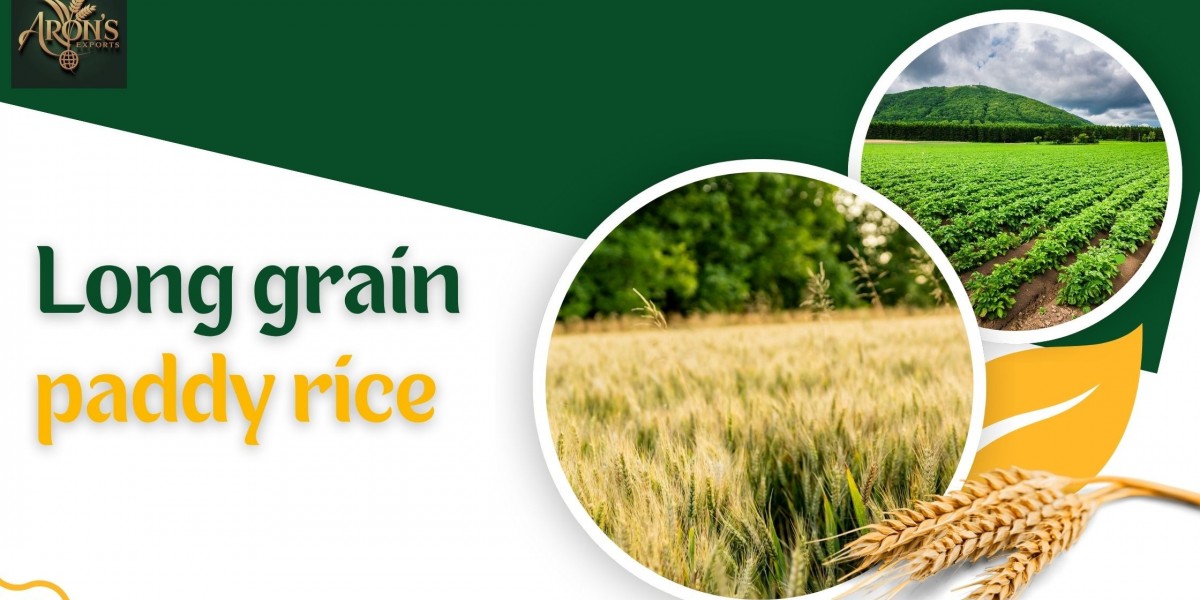Rice is one of the world’s most consumed staple foods, feeding over half the global population. Yet, not all rice is the same. The grain’s length, texture, aroma, and nutritional properties can vary significantly depending on the type of paddy grown. Among the most common varieties are Long Grain Paddy Rice and Short Grain Paddy Rice — two distinct types that differ not only in appearance but also in their cultivation, cooking qualities, and market demand.
At Aron, we specialize in supporting farmers and agribusinesses in producing premium-quality rice through innovative and sustainable solutions. In this article, we’ll explore the five key differences between Long Grain and Short Grain Paddy Rice to help you better understand how each variety contributes to the global rice industry.
1. Grain Length and Shape
The most obvious difference between Long Grain Paddy Rice and Short Grain Paddy Rice is the shape and size of the grain itself.
Long Grain Paddy Rice typically measures about 6 to 7 millimeters in length. The grains are slender, elongated, and tend to remain separate and fluffy when cooked.
Short Grain Paddy Rice, on the other hand, is usually less than 5 millimeters long, with a rounder and plumper appearance. When cooked, these grains tend to stick together due to their higher starch content.
From a visual perspective, long grain varieties such as Basmati or Jasmine rice have a distinctive elegant look, making them a popular choice for gourmet dishes and international cuisines. Short grain varieties, like Sushi rice or Arborio rice, are often preferred for dishes that require stickiness and texture cohesion.
At Aron, we work closely with rice producers to identify the most suitable grain types for their target markets, ensuring optimal quality and yield from every harvest.
2. Texture and Cooking Behavior
Texture plays a crucial role in determining how rice is used in culinary traditions around the world.
Long Grain Paddy Rice has a low starch content, particularly lower levels of amylopectin, the component responsible for stickiness. This means that when cooked, the grains stay firm, dry, and separate — perfect for dishes such as biryani, fried rice, or pilaf.
Short Grain Paddy Rice, conversely, contains more amylopectin, giving it a sticky, creamy texture once cooked. This makes it ideal for sushi, risotto, or rice pudding, where the grains need to clump together to create a smooth, cohesive dish.
The choice between long and short grain rice is often determined by cultural and culinary preferences. At Aron, we help farmers and distributors align their production with consumer demand by understanding the market trends that drive rice consumption globally.
3. Growing Conditions and Farming Practices
The differences between these two rice types also extend to the field.
Long Grain Paddy Rice generally thrives in warmer and drier tropical climates, requiring well-drained soils and carefully managed irrigation. It is widely cultivated in countries such as India, Thailand, and the United States. Because of its longer maturation period, it benefits from consistent sunlight and balanced nutrient management to achieve high yield and superior grain quality.
Short Grain Paddy Rice prefers cooler and wetter environments, which is why it’s commonly grown in regions like Japan, China, and parts of Northern Europe. The cultivation process involves deeper water levels and a slightly different fertilization strategy to maintain the grain’s unique structure.
At Aron, our agricultural experts provide farmers with advanced tools, precision agriculture techniques, and data-driven insights to improve productivity for both long and short grain varieties. Whether optimizing irrigation or managing soil health, technology is at the heart of sustainable rice production.
4. Taste, Aroma, and Nutritional Profile
While both rice types are nutritious, their taste and aroma set them apart in culinary use and consumer preference.
Long Grain Paddy Rice often has a delicate aroma and light, fluffy taste. Basmati rice, for instance, is prized for its fragrant scent and distinct flavor that pairs beautifully with curries and spiced dishes. Nutritionally, long grain varieties tend to have a slightly lower glycemic index (GI), making them a healthier option for those monitoring blood sugar levels.
Short Grain Paddy Rice, on the other hand, delivers a rich, slightly sweet, and chewy texture. Its higher starch concentration contributes to a creamier mouthfeel, making it ideal for comfort foods and desserts.
At Aron, we’re committed to helping rice producers maintain these unique taste profiles by using innovative post-harvest processing and storage solutions that preserve the rice’s natural quality and flavor.
5. Market Demand and Economic Value
The global rice market reflects diverse consumer preferences shaped by regional cuisines and export opportunities.
Long Grain Paddy Rice dominates the international market due to its versatility and long shelf life. It is the preferred variety for export from countries like India, Thailand, and Vietnam. Its popularity in international cuisines — from Mediterranean to Middle Eastern — gives it a higher commercial value per ton.
Short Grain Paddy Rice, while less common globally, commands strong demand in niche markets such as Japan and Korea. Sushi-grade rice, for example, is a premium product with high market value due to strict quality standards and specialized processing.
At Aron, we support farmers and traders by offering market insights, supply chain solutions, and quality control technologies that help them tap into both global and regional markets. By understanding the economic potential of each rice type, we help our partners make informed, profitable decisions.
Conclusion: Two Grains, One Goal — Sustainable Growth
While Long Grain Paddy Rice and Short Grain Paddy Rice differ in shape, texture, taste, and market reach, they share one common goal: to nourish the world sustainably. Both types play a crucial role in global food security and agricultural development.
At Aron, we believe the future of rice farming lies in combining traditional knowledge with modern technology. Whether it’s improving irrigation efficiency, enhancing grain quality, or optimizing post-harvest storage, our mission is to empower rice farmers to achieve excellence and sustainability in every grain they produce.
Understanding these key differences is the first step toward smarter cultivation and trade. With innovation and collaboration, we can ensure that both long and short grain varieties continue to thrive — feeding generations to come while protecting our planet’s resources.







